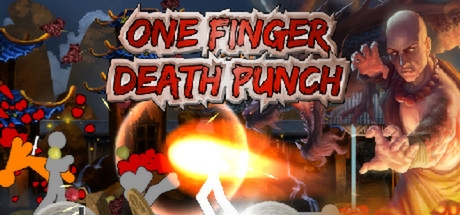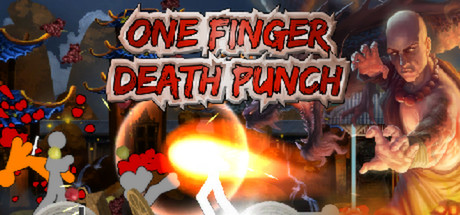Existing User Log In
New User Registration
Register for a free account to gain full access to the VGChartz Network and join our thriving community.





America - Front


America - Back

29th Feb 2020 | 2,189 views
Game: One Finger Death Punch.
Platform: PC/360/Mobile.
Year: 2013/14/15.
Developer: Silver Dollar Games
Genre: Action

There is something to be said about simplicity in videogame design. Over the years, the advancements in technology have allowed to push the boundaries of what developers could achieve, increasing the complexity and amount of activities we could actually partake in. And even so, it’s the seemingly simple concepts that stay with us the most. Years after release, games like Tetris are still in the minds of millions, outliving hundreds of other titles generation after generation. Though it is not fair to give all the credit to the idea, the execution is as much, if not more important. So many games have had great concepts on paper that haven’t been able to work in practice. And in a competitive market such as the indie scene, being able to measure your resources and using them to maximum efficiency is vital. And such, we find games such as One Finger Death Punch.
One Finger Death Punch is an action/brawler game developed by Silver Dollar Games and released on the Xbox 360 in 2013, and later on released for PC in 2014 and multiple mobile devices in 2015.
The core of the game is simple enough. You are a stick figurine fighting hordes of other stick figurines, similar to those animations from the early 2000s. You fight them in a 2D space by using two buttons, and ONLY two buttons. That’s the key here. The combat has been simplified to its basics here, to the point that the entire design of the game centers around this gimmick. The enemies come to you from right and left, and you have to use either the left or right button of your mouse (or the ones on your controller). You have a certain striking range to use your moves on, but you can’t move side to side otherwise. You hit the enemy correctly, there’s one enemy less, and if you fail, you’re left vulnerable to an enemy hit. Hit all the enemies to win the match. That’s it. That’s the basic premise. And yet the developers managed to squeeze as much content as possible from this simple core that it stays entertaining and challenging all the way through.
The gameplay is, as I’ve described before, rather simple. But the developers make up for it by adding a lot of variety and depth. There are two basic modes: levels, which is the campaign mode, and survival mode, in which you fight a constant horde of enemies until you die. The campaign is divided into three parts, divided by difficulty. Each difficulty consists of a massive map, in which you have to defeat a series of levels to reach the final boss. Like in a board game, you advance square by square, and on each square there’s a different challenge. To avoid becoming repetitive, the game will offer multiple kinds of challenges, and not just the “mob round” in which you just defeat enemies until they ran out of stick enemies. There are around twelve kinds of levels, which adds a surprising amount of variety. In Speed Round mode, the enemies will come at you faster than usual, but there’s a time limit to finish the stage, which can get pretty hectic at the last couple of seconds. Nunchaku Round and Lightsaber Round are levels in which you use a special weapon to defeat all of the enemies around, but the speed will start increasing the longer the level goes on. In Multi Round, you get a simple pattern of enemies that you have to finish multiple times while the speed increases on each of them. In Defender Round, you have to stop enemy projectiles from hitting you, with only a single health point, and Bomb Round and Dagger Round is the opposite, throwing bombs or daggers at the enemies. In Smash Round, you have to use combos to throw your enemies against objects, breaking them. Retro Film Round takes away the colours from the enemies, which forces you to pay special attention to certain units. Boss Round throws you against one or more difficult enemies. Survival Rounds are free levels, you can just skip them, only there to earn points. Finally, Thunderstorm Round adds a storm effect that makes seeing different types of enemies and their weapons difficult. The team did an excellent job diversifying all of the different modes, especially when they have to do it around a rather small premise, though some of the levels feel either gimmicky or redundant. In particular Thunderstorm Round and Retro Film Round are more annoying than fun, especially when the effect is so dense if feels unfair to fight in those conditions, there’s making things difficult to see and there’s hiding them behind a practically opaque deep dark blue filter. Most of the levels center around the increasing speed of the brawl, which makes you enter some sort of trance after a while, you just concentrate and enter in the rhythm of the fight. The developers themselves say the game is not a rhythm game, needing a strategy to deal with certain levels on top of your reflexes, and that’s due to the enemy variety and power up choice. You can choose a variety of power ups that grant you certain effects and bonuses. Some of them feel quite either overpowered or too situational (for example, the +1 health against 99 enemies is pointless in short matches, but it’s a godsend in very long ones). The best ones in my opinion are the ones that allow you to gain some space from the enemies, like “Deep Impact” or “Freezing point”, usually slowing down the fight as a result and making it easier to either continue the fight or gain some lost footing by slowing down the enemies’ arrival.
The enemy variety is surprisingly good. From the simple one hit mooks that are just there to die, to the armed ones who might throw spears, maces and other stuff at you (weapons that you can use against them once you defeat them), to the annoying jumpers that flip around you and need multiple hits to deal with. In my playthrough, this jumpers are the most annoying of the bunch, due to them staying close to you once you hit them the first time. The brawlers are interesting as well, but after a while, the small fight sequence against them will actually be welcome due to, once it’s finished, the enemies will have given a step backwards, giving you more space to act. The bosses are strong units, but are basically jacked up jumpers who appear only on certain levels. They are colour coded, but considering you can see below them what you need to do to defeat them anyway, it feels unnecessary. With each level mixing them, they are able to create some seriously difficult challenges that need very quick reflexes to do well. Plus, as many beat’em ups, it’s just satisfying to deal with hordes of enemies at once. The team has given all of this enemies a lot of thought and personality, which is also shown in the animation.
The presentation overall is quite good, although it sometimes shows the budget limitations due to the reuse of backgrounds and the map. You have different fighting styles, and your avatar will act differently depending on the fighting style (though they offer no functional difference combat-wise). The hits will throw your enemies into the air, maim them, cut them in half, impale them, punch them into pieces… For a sticker fighter, it is surprisingly graphic and violent. The presentation is based on classic Kung-Fu and other martial arts movies, and thus they try to get as many tropes from those movies as possible, even though there is no real plot other than “reach the boss”. The map’s enormous, and has multiple, optional routes to reach the final boss. But it is sadly reused in all three difficulty levels. Not really a big problem, though, due to the levels changing from difficulty to difficulty. Still, a bit of variety would’ve been nice.
The Survival Mode is just an infinite mode. You fight as long as possible until you are defeating, going through certain special lightsword-nunchaku rounds to have a chance to recover health. You also unlock Blind Mode, which is Survival Mode but without actually seeing the range of your attacks. Beat 500 enemies on each, and you unlock the last mode, which I won’t spoil here, but suffice to say it’s… weird.
It’s surprising to see so much content from such a simple premise, but they managed to pull it off. The game is at its best when it manages to pull you into a state of concentration to pay attention to both sides, how many enemies are close, how many are far away, what kind of enemies are there, which weapons are carrying, what powerups you have available… all while everything moves faster and faster. There is a massive sense of accomplishment for defeating each level, especially at the higher difficulties. And the game can get pretty challenging, pretty fast. I almost throw away my mouse after losing a 400 mooks mob level for one single enemy left. After a couple of day trying it again and again with different power up combinations, beating it felt amazing. It manages to feel like you can surely beat it next try, even though you’ve lost time and time again, which is no small feat. Not bad for a game in which you only push two buttons.
Score: 8/10